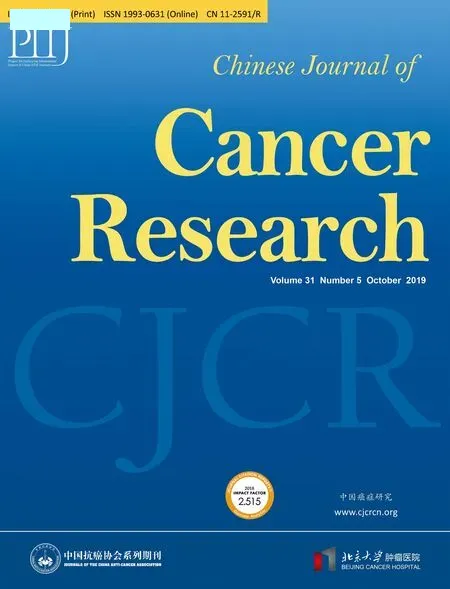Comments on Chinese guidelines for diagnosis and treatment of malignant lymphoma 2018(English version)
Weiping Liu,Jun Zhu
Key Laboratory of Carcinogenesis and Translational Research(Ministry of Education/Beijing),Department of Lymphoma,Peking University Cancer Hospital &Institute,Beijing 100142,China
Lymphoid and myeloid neoplasms are common malignant tumors in China,which threaten people’s health(1).To improve the diagnosis and treatment of lymphoma,the National Health Commission of the People’s Republic of China revisedChinese guidelines for diagnosis and treatment of malignant lymphomain 2018(2).
The new guidelines are based on theClassification of Tumours of Haematopoietic and Lymphoid Tissuesrevised by the World Health Organization in 2016.The new edition provided principles of accurate pathological diagnosis of lymphoma on the basis of various scales including histomorphology,immunohistochemistry,fluorescent immunohybridization and genetics.Moreover,new categories such as high-grade B-cell lymphoma with MYC and BCL2 and/or BCL6 translocations were added in the revised edition.
The initial evaluation,staging and response assessment of Hodgkin and non-Hodgkin lymphoma in the new guidelines are based on the recommendations in Lugano conference in 2014.These staging and response criteria can be applied to most types of lymphoma.In addition,fluorodeoxyglucose positron emission tomographycomputed tomography(FDG PET-CT)was formally incorporated into standard staging and used to assess response with the 5-point scale.
The prognosis system is also improved in the new guidelines.For example,National Comprehensive Cancer Network(NCCN)-International Prognostic Index(IPI)further stratified the levels of age and lactate dehydrogenase in terms of IPI,which can accurately predict the prognosis of patients with diffuse large B-cell lymphoma.Similarly,MIPI-c,combination of MIPI and Ki-67,could better differentiate the prognosis of patients with mantle cell lymphoma.Notably,a novel prognosis model of NK/T cell lymphoma based on Chinese patients was established.
Classical strategies are highlighted consistently in the new guidelines.For example,the treatment of NK/T cell lymphoma with advanced stage should be based on chemotherapy with L-asparaginase or Pegaspargase(3).Autologous hematopoietic stem cell transplantation is still a preferred option of first-line consolidation therapy for patients with high-risk factors(4,5),especially for types including mantle cell lymphoma,lymphoblastic lymphoma and peripheral T-cell lymphoma.New drugs and therapies provide more options for the treatment of patients with relapsed/refractory disease(6,7).For example,immunocheckpoint inhibitors or Brentuximab Vedotin are used for the treatment of Hodgkin’s lymphoma relapsed after autologous hematopoietic stem cell transplantation,ibrutinib is used for relapsed/refractory chronic lymphoblastic leukemia/small lymphoblastic lymphoma,and CART therapy is used for relapsed/refractory diffuse large Bcell lymphoma.
In conclusion,the new guidelines provide a scale for precision and individualized treatment of lymphoma at various levels including diagnosis,staging,treatment and prognosis.The new guidelines will direct the clinical practice and promote the standardized diagnosis and treatment of lymphoma in China.
Acknowledgements
None.
Footnote
Conflicts of Interest:The authors have no conflicts of interest to declare.
 Chinese Journal of Cancer Research2019年5期
Chinese Journal of Cancer Research2019年5期
- Chinese Journal of Cancer Research的其它文章
- A study on service capacity of primary medical and health institutions for cervical cancer screening in urban and rural areas in China
- Medical expenditures for colorectal cancer diagnosis and treatment:A 10-year high-level-hospital-based multicenter retrospective survey in China,2002-2011
- Surgical outcomes of hand-assisted laparoscopic liver resection vs.open liver resection:A retrospective propensity scorematched cohort study
- Texture analysis on gadoxetic acid enhanced-MRI for predicting Ki-67 status in hepatocellular carcinoma:A prospective study
- Machine-learning-assisted prediction of surgical outcomes in patients undergoing gastrectomy
- Prognostic significance of lymphovascular infiltration in overall survival of gastric cancer patients after surgery with curative intent
